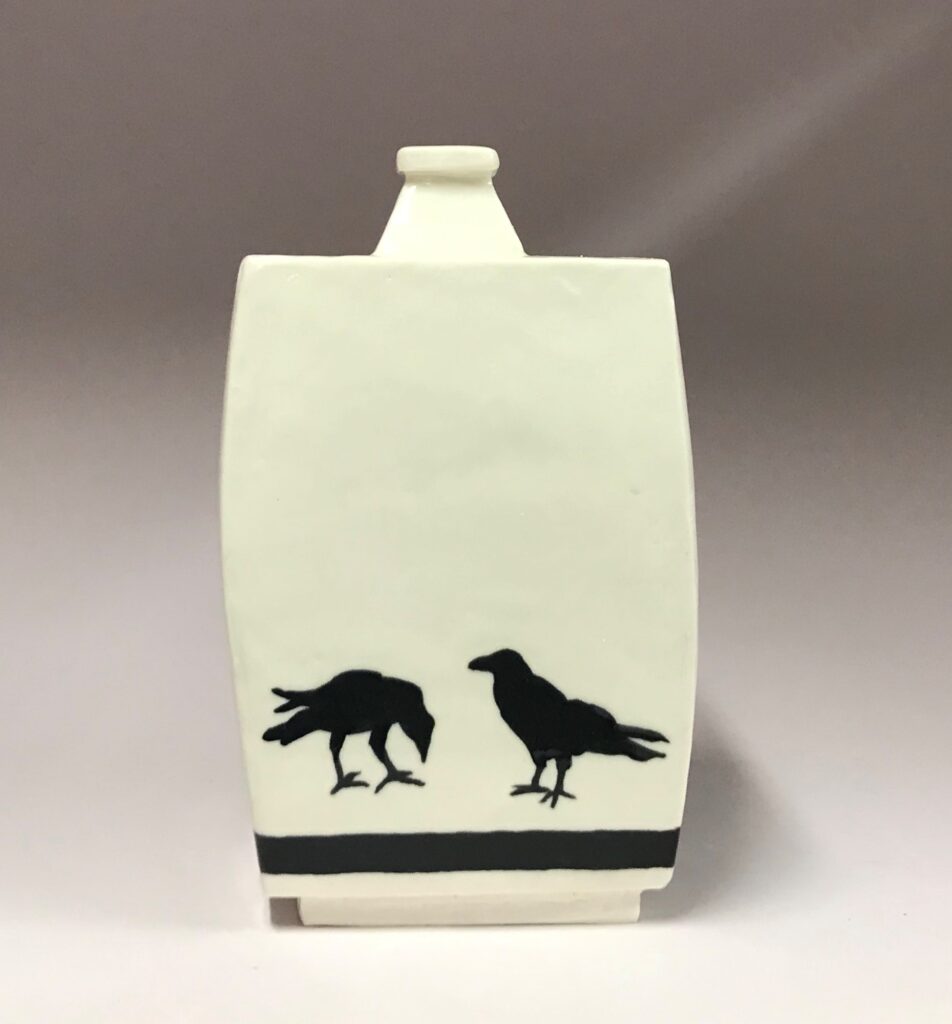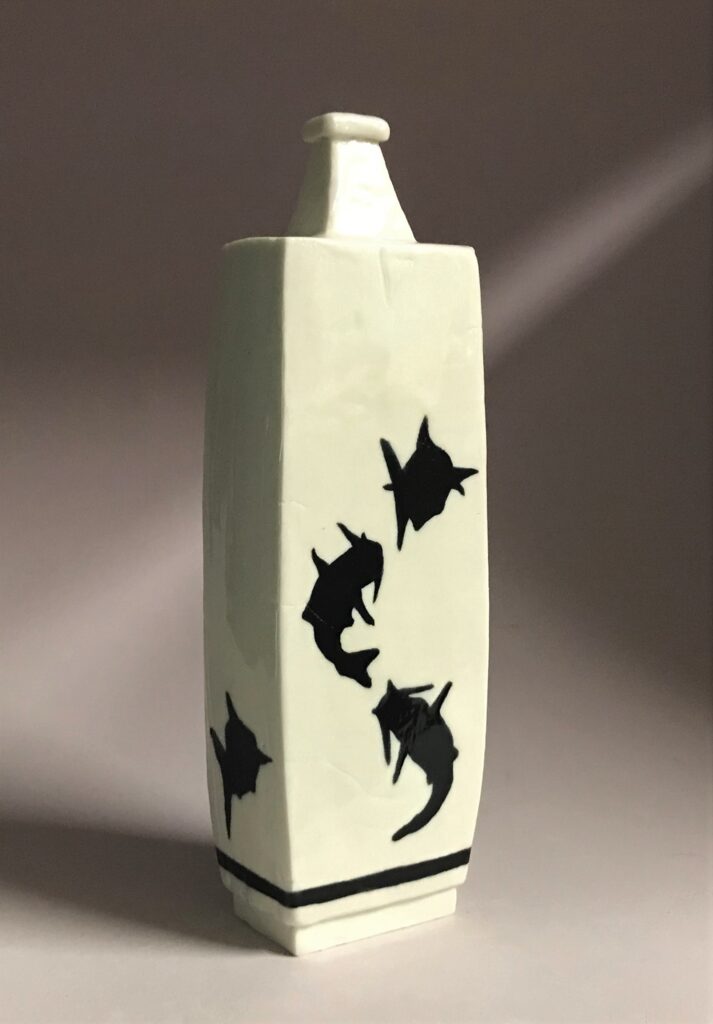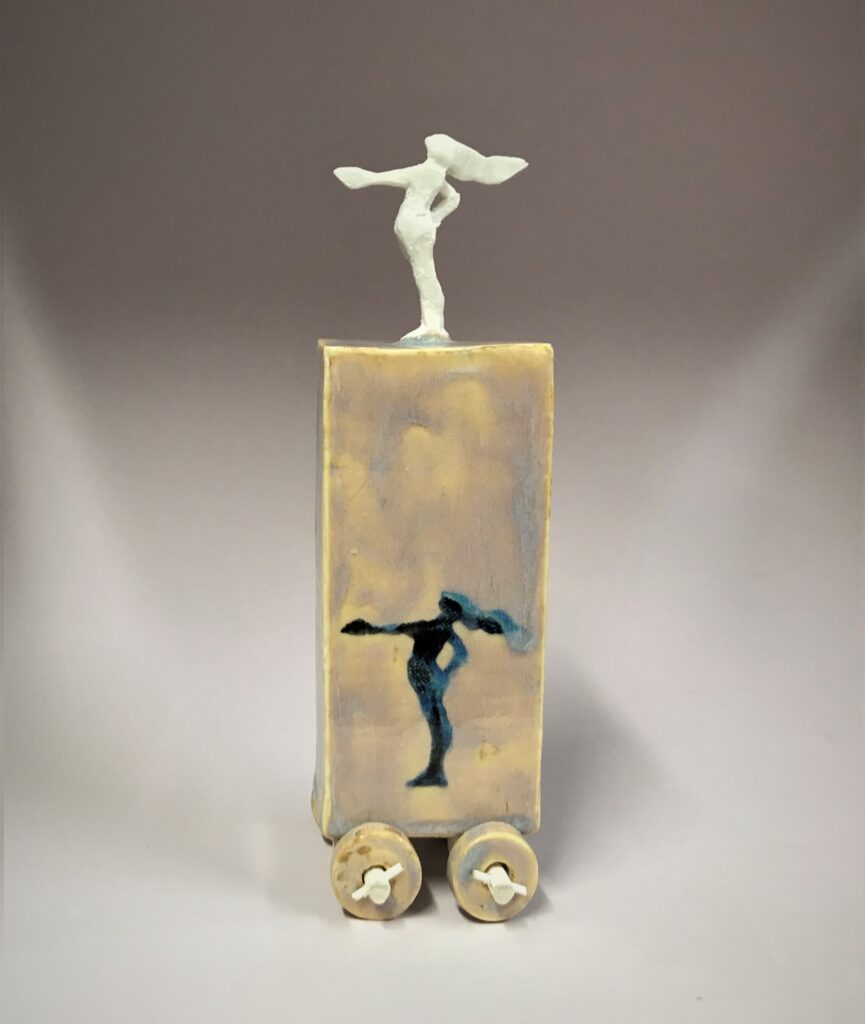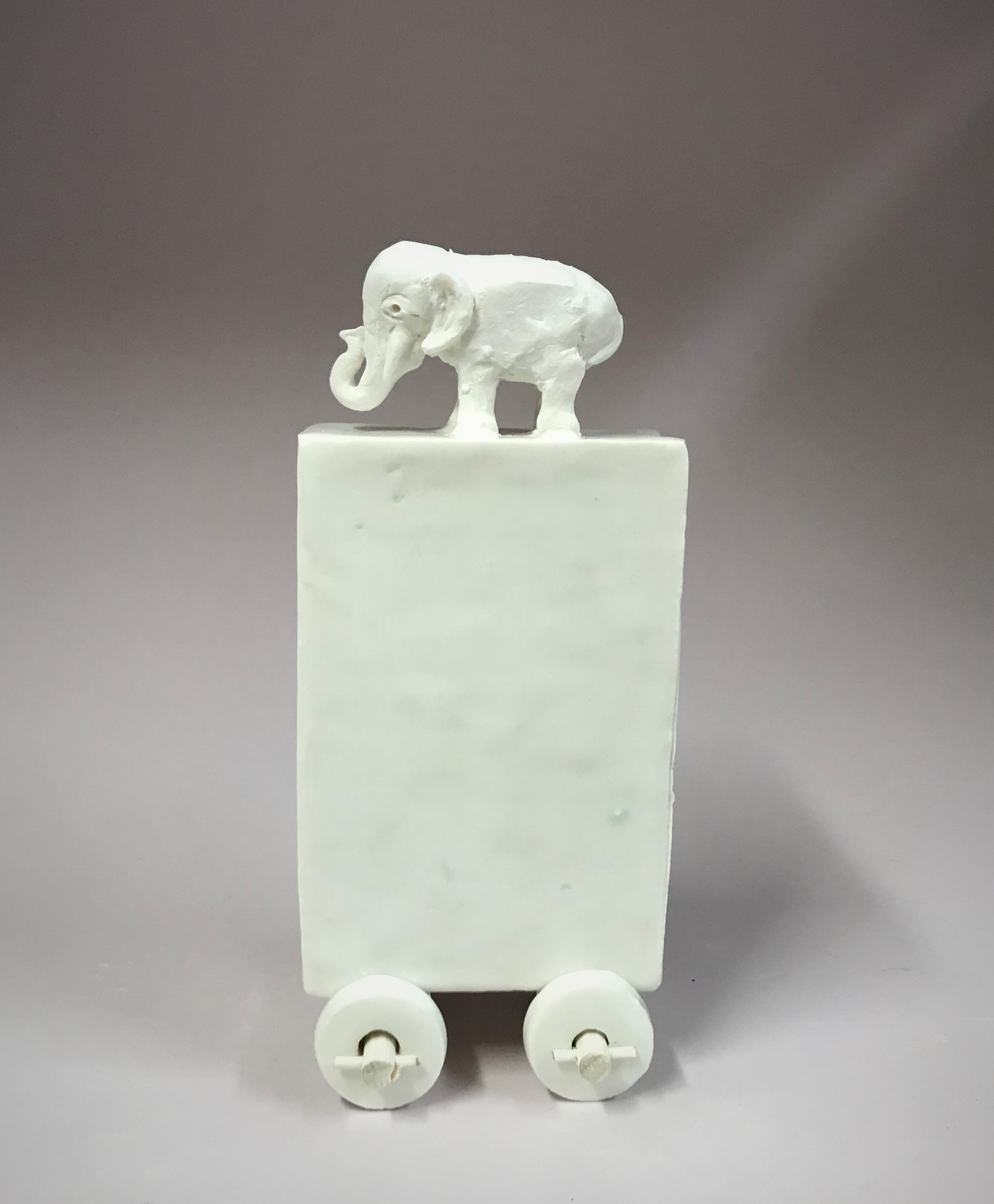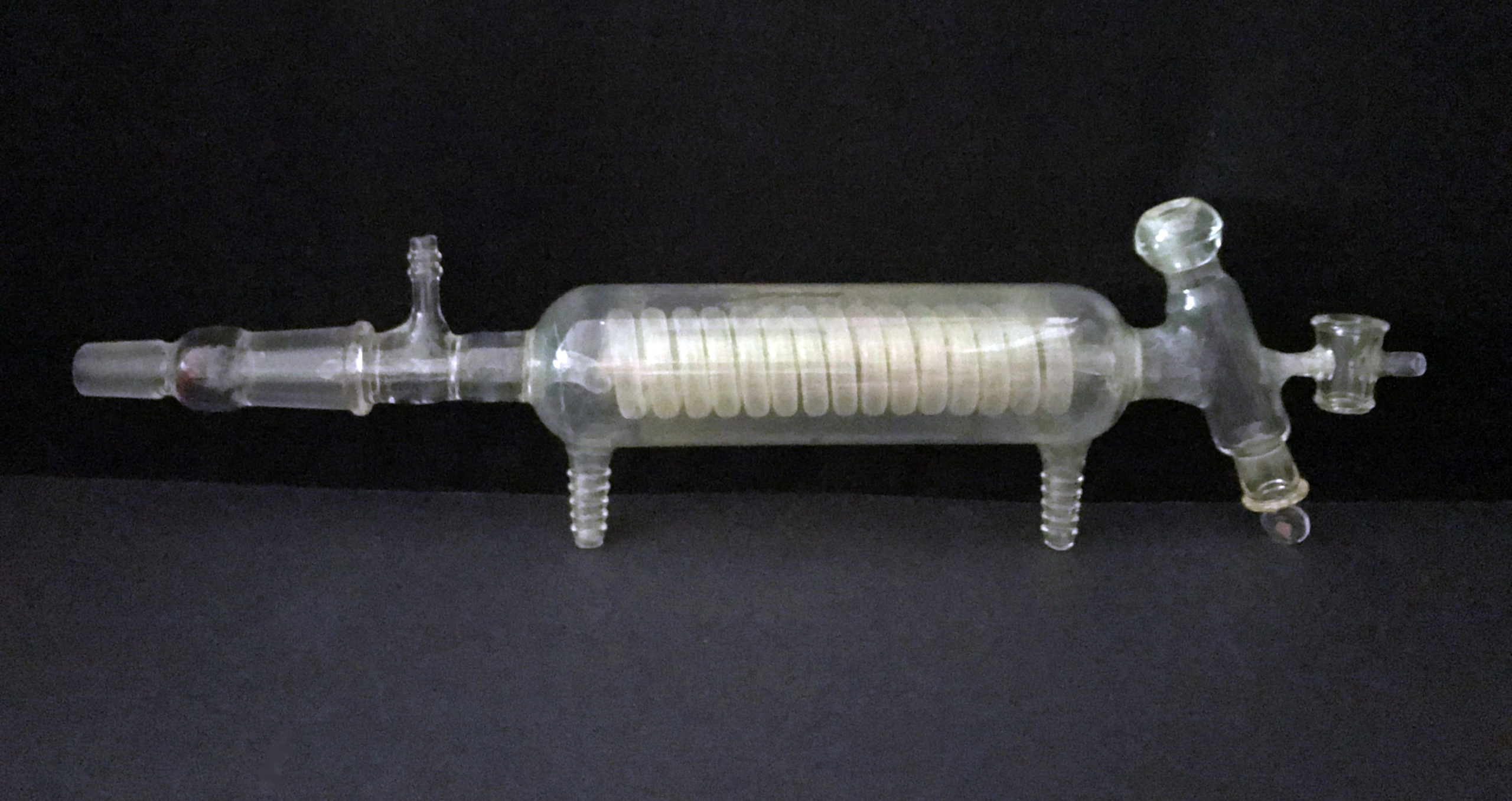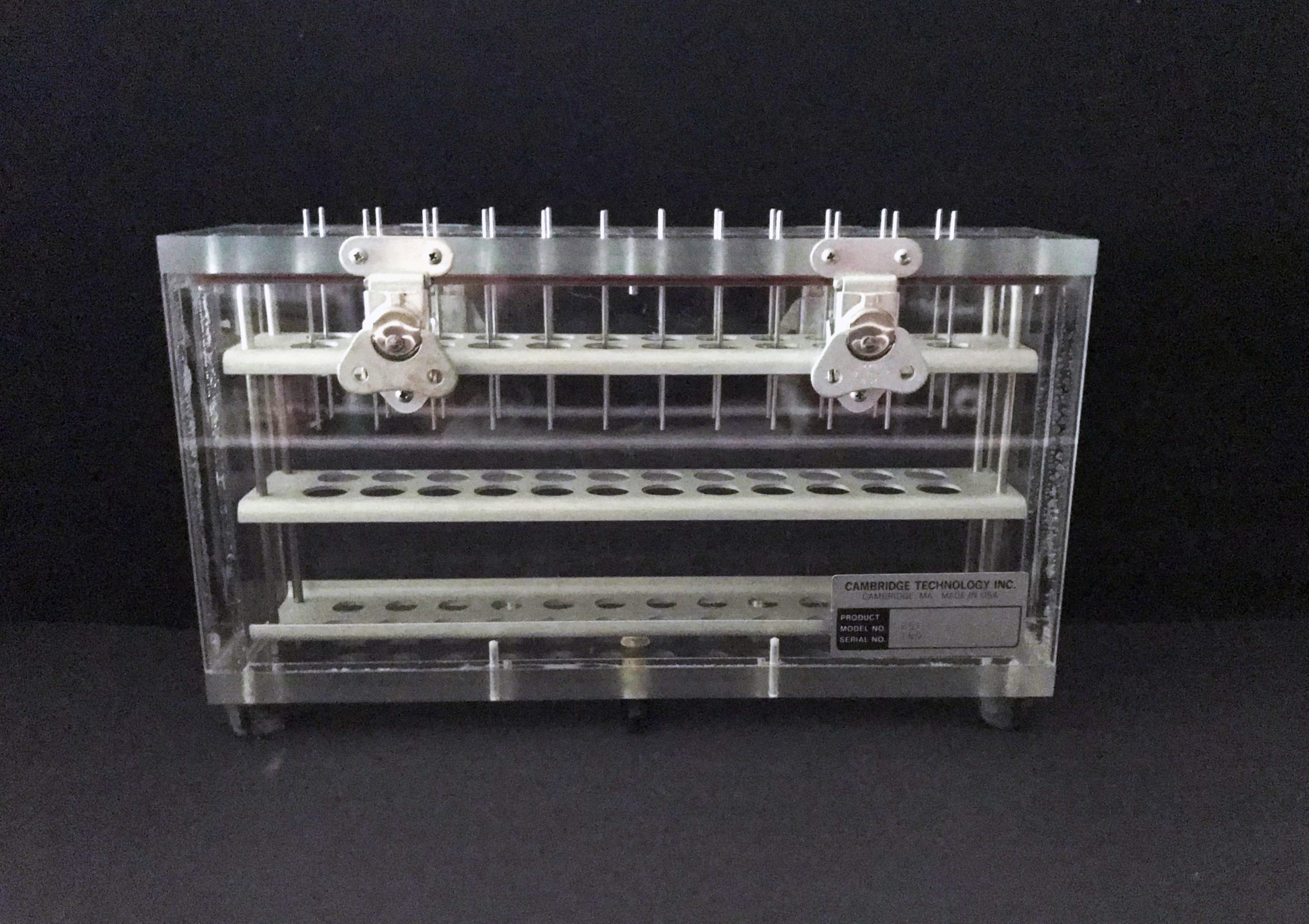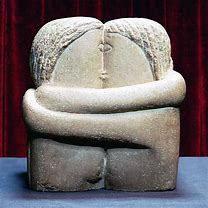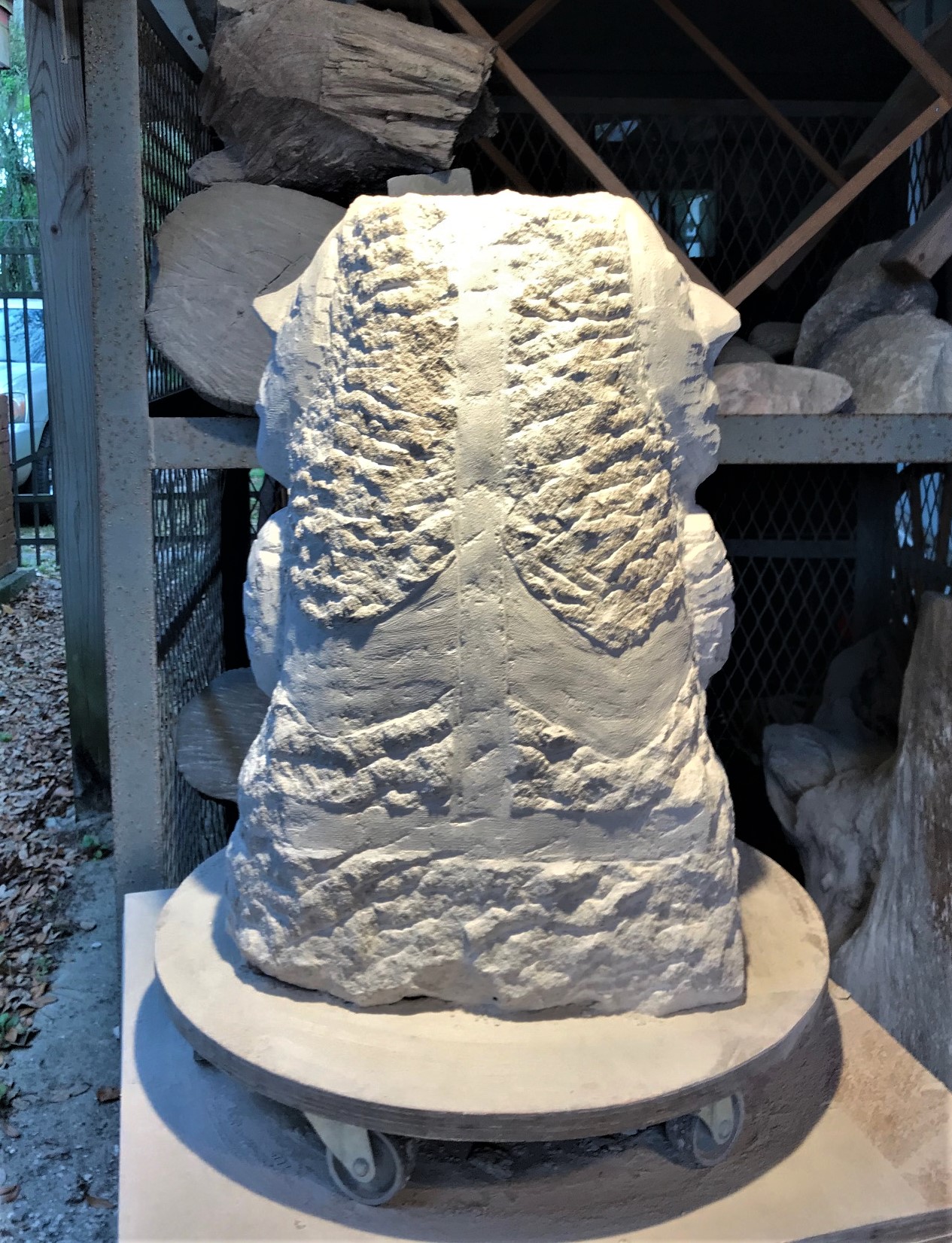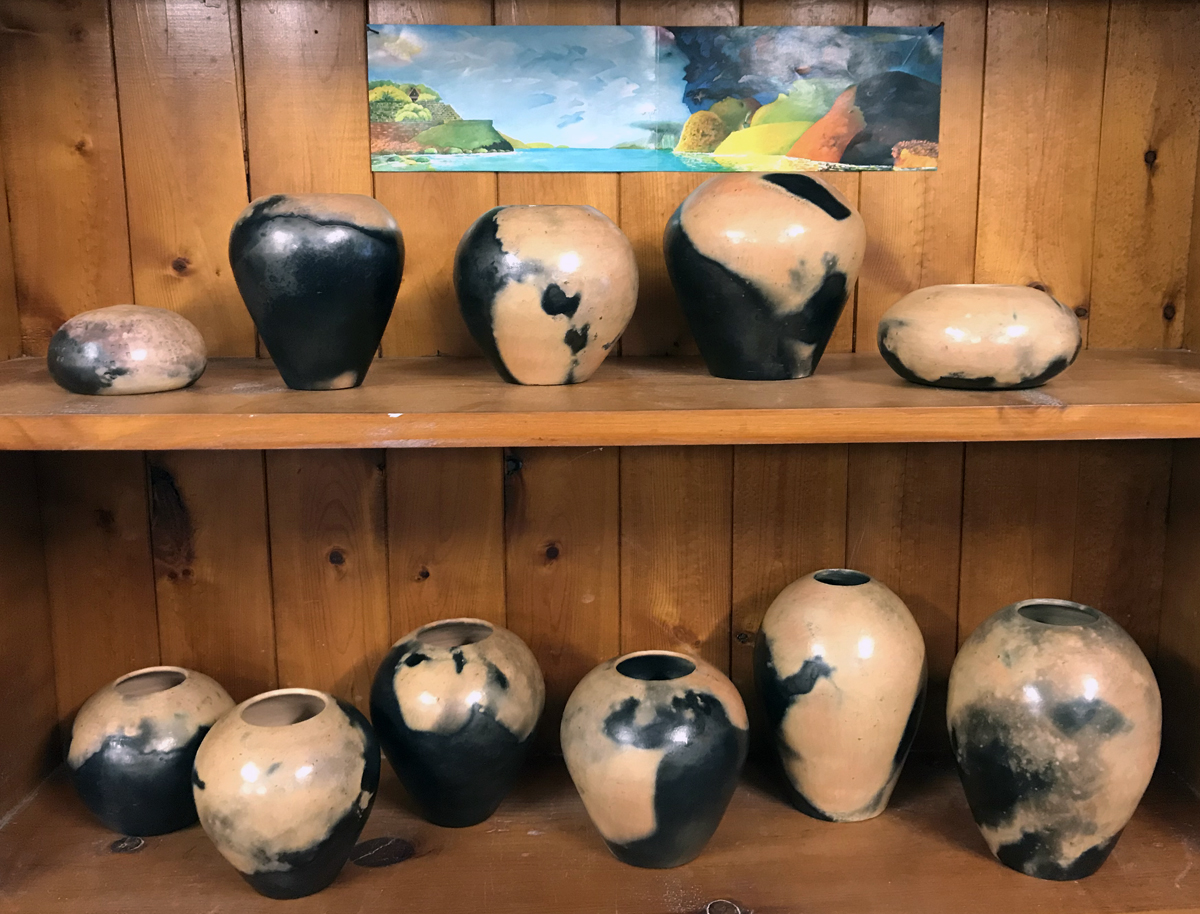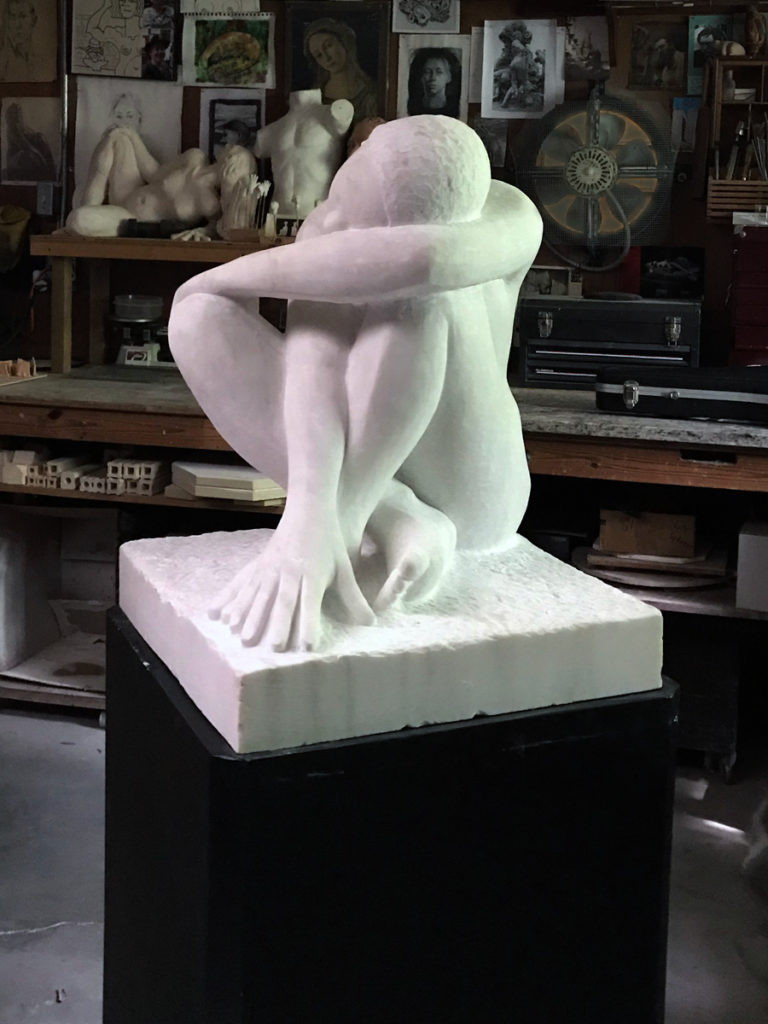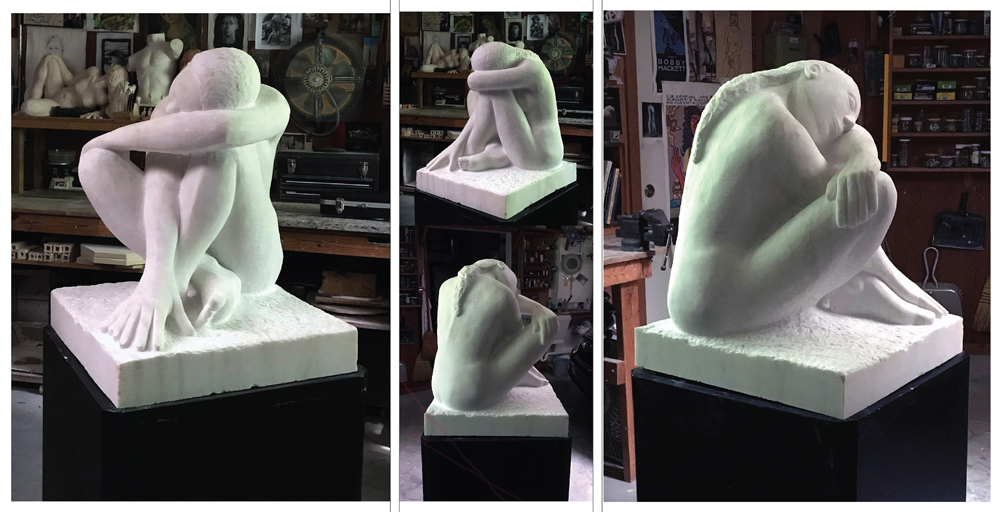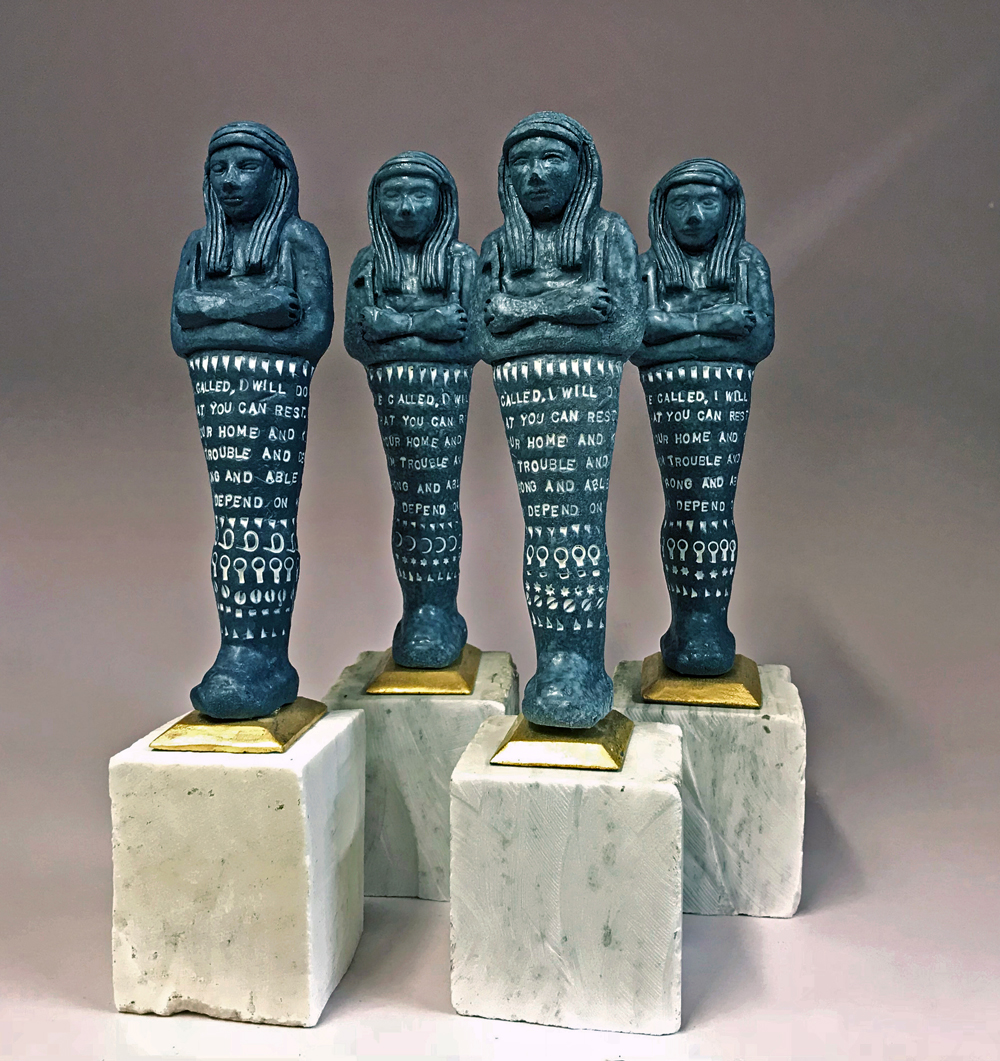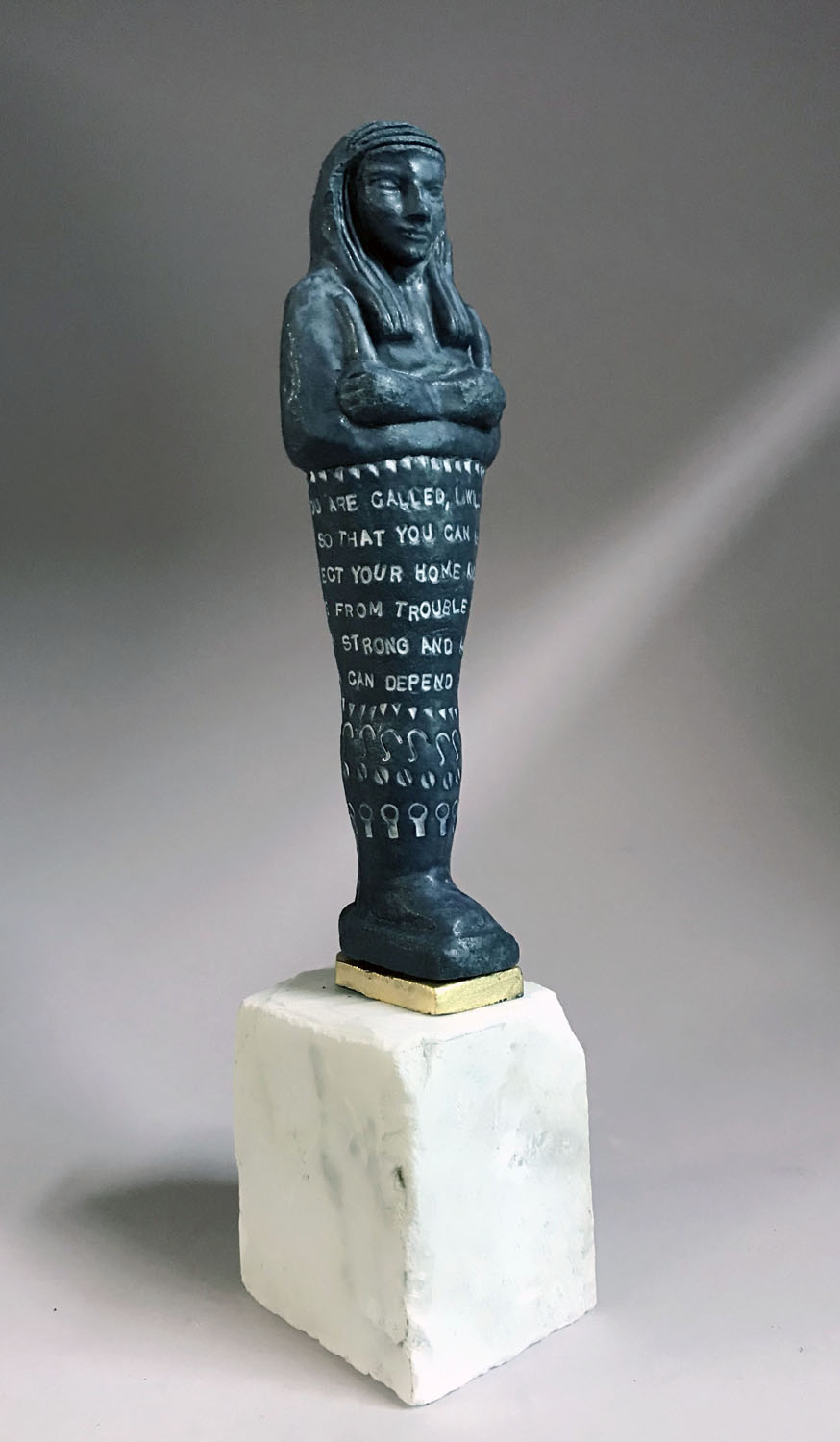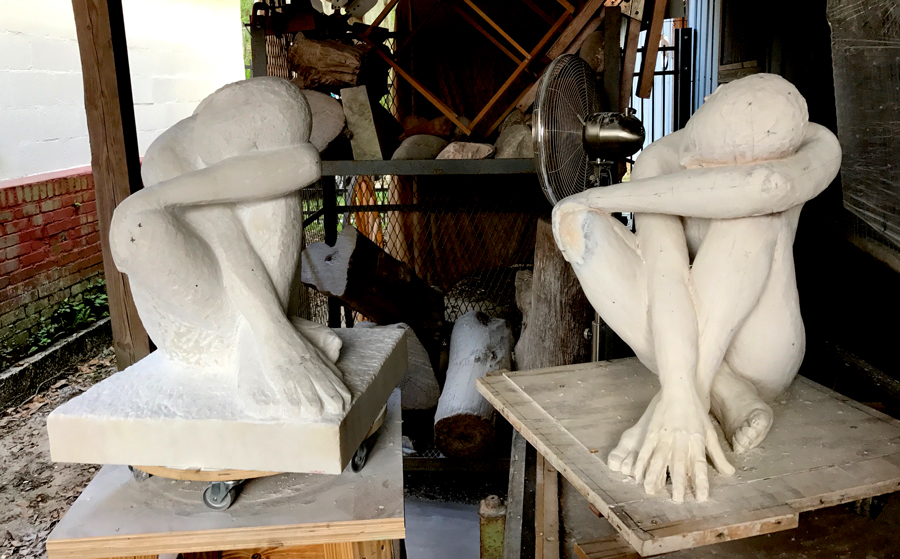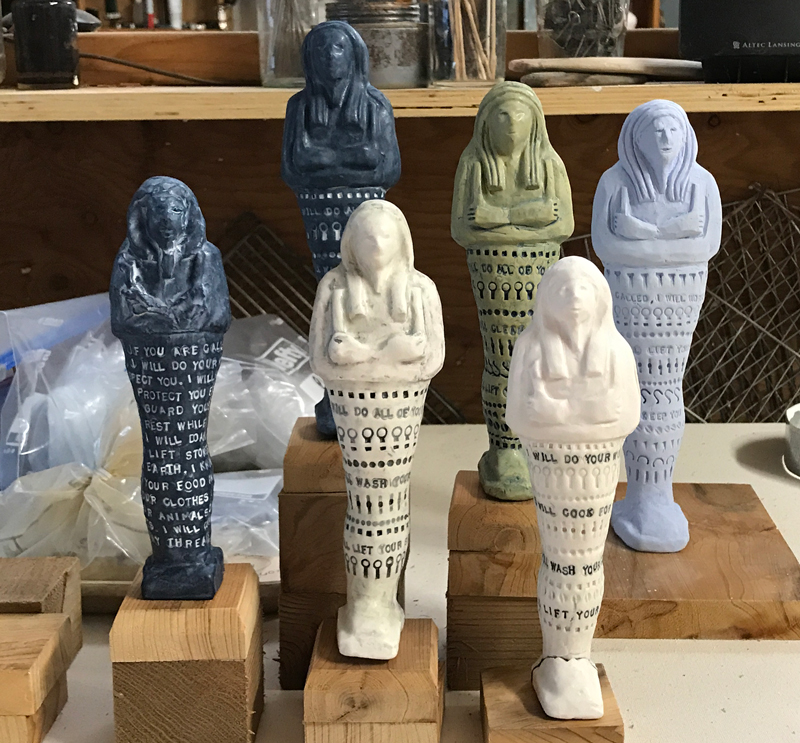Several years ago, I hand built several Shoji Hamada-inspired ceramic bottles but the result was not satisfying: it was difficult to construct the curved forms.
Now I have used press molds to make the main shapes. The bottle tops are then added using components made from smaller molds. The fish and raven figures are painted on bisque ware using a Jet Black (Amaco) or a Kings Blue (Mayco) underglaze. Finally, a cone 6 glaze (5/20) is used in an oxidation firing. The tallest one is 10″ tall.

